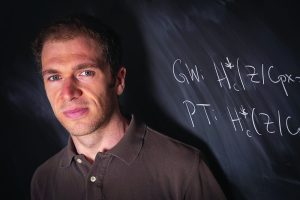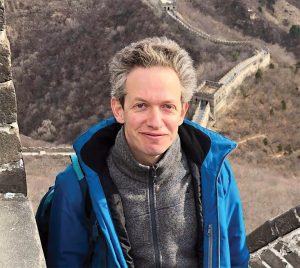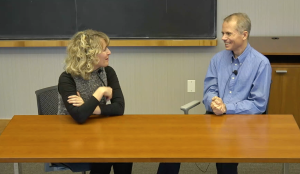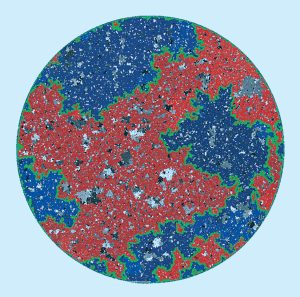In this issue of the Newsletter

Milestones and Prizes

From Billiard Dynamics to Riemann Surfaces

Random Paths and Purpose: A Conversation with Scott Sheffield





Organized by: Qile Chen (Boston College) Felix Janda (University of Illinois Urbana-Champaign) Sheldon Katz (University of Illinois Urbana-Champaign) Melissa Liu (Columbia University) John Pardon (SCGP) Rachel Webb (Cornell University) Modern curve-counting theories were in part inspired by the work of physicists yet have active lives of their own as interesting and rich mathematical notions with … Read more
Organized by: Qile Chen (Boston College) Felix Janda (University of Illinois Urbana-Champaign) Sheldon Katz (University of Illinois Urbana-Champaign) Melissa Liu (Columbia University) John Pardon (SCGP) Rachel Webb (Cornell University) Modern curve-counting theories were in part inspired by the work of physicists yet have active lives of their own as interesting and rich mathematical notions with … Read more
The Della Pietra Lecture Series is pleased to present a series of lectures by Astrophysicist Jocelyn Bell Burnell, University of Oxford All talks will be streamed live at scgp.stonybrook.edu/live General Public Lecture *NOTE this event has been rescheduled to Wednesday 2/14 due to inclement weather: Wednesday, February 14 at 5:00pm Location: Della Pietra Family Auditorium – … Read more
Organized by: Tomoyuki Arakawa (Kyoto University) Christopher Beem (University of Oxford) Thomas Creutzig (University of Albert) Leonardo Rastelli (Stony Brook University) Brandon Rayhaun (Stony Brook University) Supersymmetric quantum field theories (SQFTs) have been intensely researched by both physicists and mathematicians for decades. For physicists, they furnish computationally and conceptually tractable models from which one may … Read more
Organized by: Evita Nestoridi ( Stony Brook University) Dominik Schmid ( Bonn University) Markov chains serve as indispensable tools for generating random structures, such as graph colorings, vector space bases, and polygon triangulations. Mixing times capture the temporal evolution towards equilibrium. Of particular interest is the abrupt transition from unmixed to mixed – the cutoff … Read more
Organized by: Tomoyuki Arakawa (Kyoto University) Christopher Beem (University of Oxford) Antoine Bourget (IPhT Saclay), Thomas Creutzig (University of Alberta) Julius Grimminger (University of Oxford) Daniel Juteau (LAMFA, Université de Picardie) Paul Levy (Lancaster University) Leonardo Rastelli (Stony Brook University) Brandon Rayhaun (Stony Brook University) Alex Weekes (University of Saskatchewan) Supersymmetric quantum field theories (SQFTs) … Read more
Organized by: Elena Giorgi (Columbia University) Alexandru Ionescu (Princeton University) Avy Soffer (Rutgers University) Maxime Van de Moortel (Rutgers University) This workshop will bring together leaders in the fields of Hyperbolic & Dispersive PDEs and General Relativity. The latter group comprises influential figures from both Mathematics and Physics communities. Our overarching objective is two-fold: to … Read more
Wishing you good health, peace, and creativity throughout the New Year
The Simons Center for Geometry and Physics was honored to host celebrated author Dava Sobel last spring for the Della Pietra Lecture Series. Read More…
The 20th Simons Physics Summer Workshop (originally called the Simons Summer Workshop in Mathematics and Physics) was a celebration of the 19 successful workshops that preceded it. Read more…